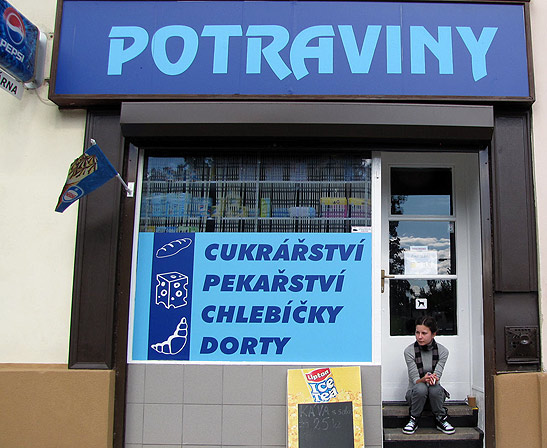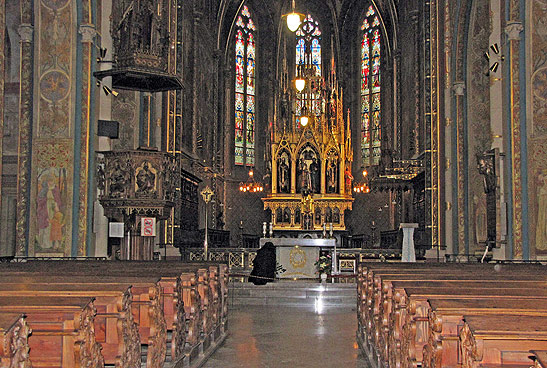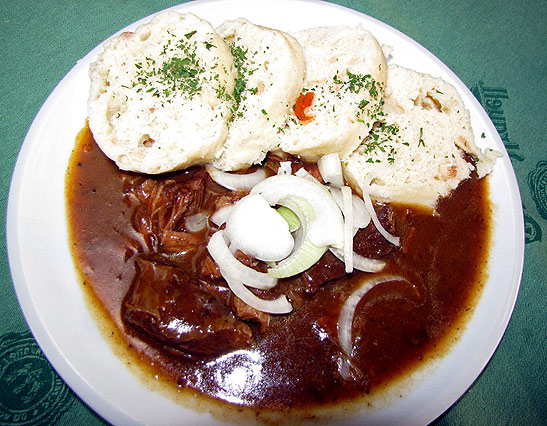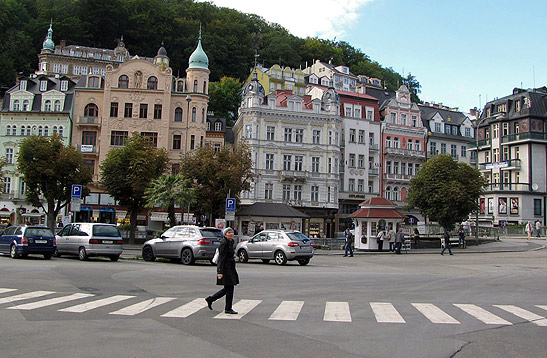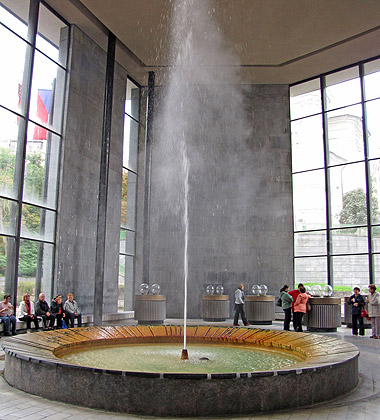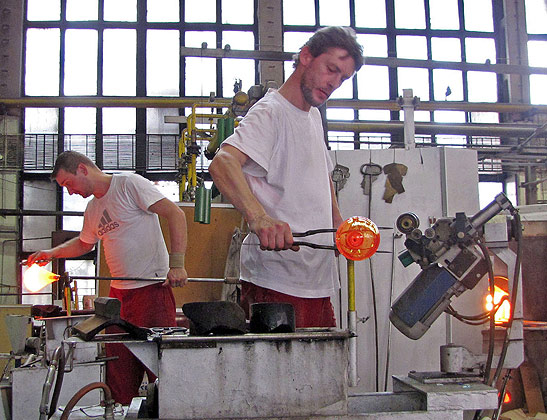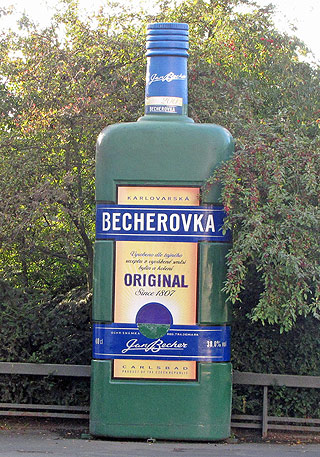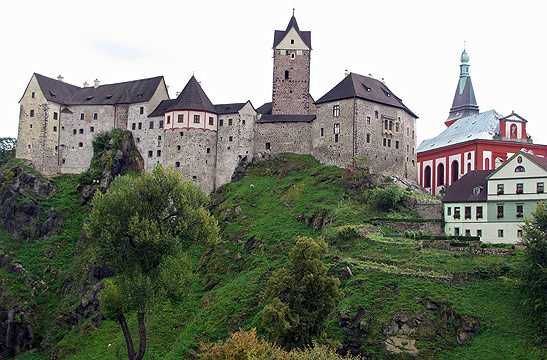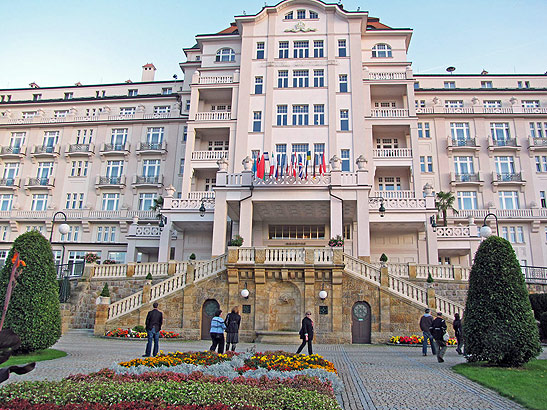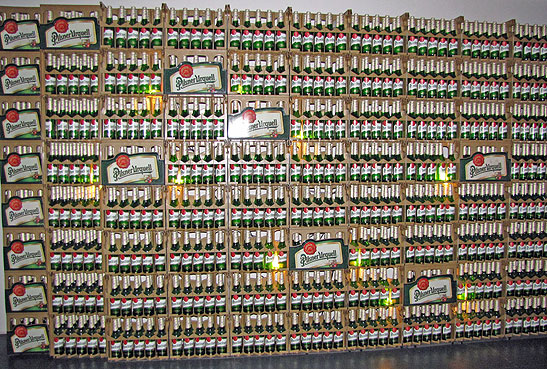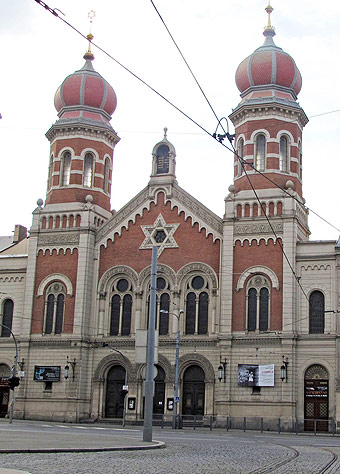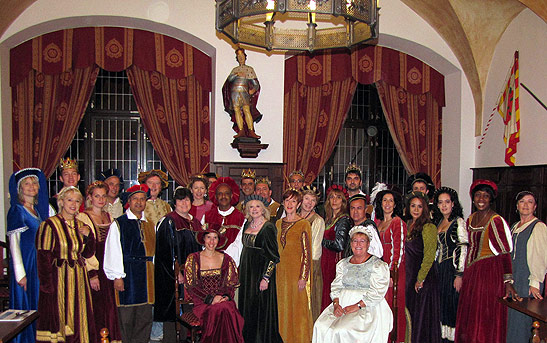 |
 |
|
 |

|
The Czech Republic
– A Little Jewel
Day 1 On arrival I checked into the Holiday Inn Hotel in the Prague Congress Centre. The lobby of the hotel is nicely done and the friendly staff was helpful in retrieving one of my missing bags that got placed on the wrong plane during my connecting flight from London’s Heathrow Airport.
I decided to do a little exploring on my own before connecting with the rest of the journalists and got some guidance from the front desk. Just a short walk from the hotel is the Vysehrad “High Castle,” the first Czech king’s residence said to be full of myths and legends. Vysehrad served as a stronghold guarding entry into the city since the early Middle Ages.
Nearby is the Slavin cemetery, the burial site of the most prominent figures in Czech politics and culture, as well as a lovely park with beautiful statues and one of the many churches sprinkled throughout the country.
I wanted my first meal to be authentic so I went into a bakery and asked one of the customers if she could recommend a local restaurant. She was very helpful and actually walked me to one of her favorite restaurants where I ordered traditional goulash and dumplings. Although not served with any particular design or flair, it was a generous portion with the thick dumplings perfect for sopping up the abundant amount of gravy. Day 2 It is 9:00 am and we all piled into the bus for our first visit, which was to Karlovy Vary (Carlsbad). Driving rush hour in Prague is about the same as any major city and many of the streets were gridlocked. Teenagers, some of who are members of Gypsy gangs, have tagged almost all the buildings. Contrasted by the more historic, charming buildings, the former influence of Soviet occupation is apparent in the architecture of some of the post World War II structures that are cold, stark, and institutional looking.
A tour of the factory is a must to see how these exquisite glass products are created, from how they are blown to finished. To become a master craftsman, you must attend the Glass and Ceramic School for three years and then serve as an apprentice for two years. A very liberal work environment, employees are allowed four lite beers per shift so all appear to be enjoying their work. If you want to wash down the somewhat lingering taste of the mineral water, head over to the Becherovka Museum of Liqueur Factory for a sampling of Jan Becher’s liqueurs. Made from herbal bitters and flavored with aniseed, cinnamon, and approximately 32 other herbs, only two people actually know the recipes. Served ice cold, these liqueurs are often used as a digestive aid. Lunch was in nearby Loket, a small, charming town crowned with a picturesque city center where “Casino Royale” was shot. The Cisar Ferdinand restaurant offered a hearty traditional Czech meal consisting of chicken, pork, bacon, Camembert cheese, and mashed potatoes, preceded by a peach stuffed with chicken salad as an appetizer. (Broskeev).
After visiting the Grand Hotel Imperial, whose guest list since it opened its doors in 1912, included the Rothchilds, the Russian Grand Duke Paul, and from Hollywood, Douglas Fairbanks and Mary Pickford, we overnighted in the Hotel Resort Sanssousi whose apt tag lines are “Gardens of Health” and “A time without cares.” Historically, the spa tourism business collapsed following both world wars and in 1948 all mineral resources and spa facilities were nationalized and the hotel became a state sanatorium with its own baineological facility. In 1992, after a complete remodel, the hotel was returned to its former appearance and glamour. Day 3
This happy group of journalists and travel agents from all over the world piled back on the bus at 8:30 am for a quick look at the Castle and Chateau in Becov, home of The Shrine of St. Maurus, a significant Romanesque monument discovered in 1985. We then headed to Pizen, “The City of Beer,” in West Bohemia.
Home of the world famous Pilsner Urquell Brewery, we visited the old and the new brew houses and the cellars where we tasted unfiltered beer right out of the barrel. Brewed for the first time in 1842, it takes five weeks to make beer. The museum is located in the original, medieval brewing house and is said to be the oldest of its kind in the world. In the early days of home brewing, the king authorized the custom of placing a wreath on your front door if you were brewing beer. The factory has the largest elevator in the Czech Republic that holds up to 72 people. It’s like a good size room that moves. Oh yes. The Czechs are purported to be among the biggest consumers of beer in the world.
Now the fourth largest city in the Czech Republic, Pizen, founded in 1295 by King Wenceslaus II, is also home to the biggest synagogue in the Czech Republic. Built in 1893 by a Christian architect, this Moorish-Romanesque synagogue is the second largest in Europe and third largest in the world, a testament to the former Jewish population. Before the war, there were 120,000 Jewish people in the Czech Republic, with only 5,000 remaining today, and just 30 in this town. Many of the synagogues, due to the small Jewish population, have become museums for which you have to pay an entry fee. Also of historical significance is the Gothic St. Bartholomew Cathedral in which the beautiful Madonna of Pilsner adorns the main altar. Following an enjoyable lunch at Na Spilce, a charming restaurant which was formerly a fermentation cellar called “spilka,” we took a guided tour of Pizen and then off we went to the historic town of Cesky Krumlov, a UNESCO site in South Bohemia. With its quaint, narrow, winding streets, and a historical city center framed by a towering castle and chateau sitting above the Vltava river, the town is considered to be the most well preserved example of the medieval era. During that period, the castle was home of the most powerful Czech nobles, The Rosenbergs, Lord of the Rose.
Our hosts planned a most extraordinary surprise for us which turned out to be was a Renaissance dinner at the Hotel Ruze. Much to our delight, each of us got to select a period costume and then dined on authentic food which some of us ate with our hands. While you’re in this town, do check out the charming Krumlov Mill, a thematic restaurant overlooking the picturesque Vltava river. This ends Part 1. Stay tuned for Part 2 for further adventures in the Czech Republic, including exploring magical Prague and a fun day at the Prague Culinary Institute. Ahoj. Hello and goodbye… Related Articles:
|
This site is designed and maintained by WYNK Marketing. Send all technical issues to: support@wynkmarketing.com

|











